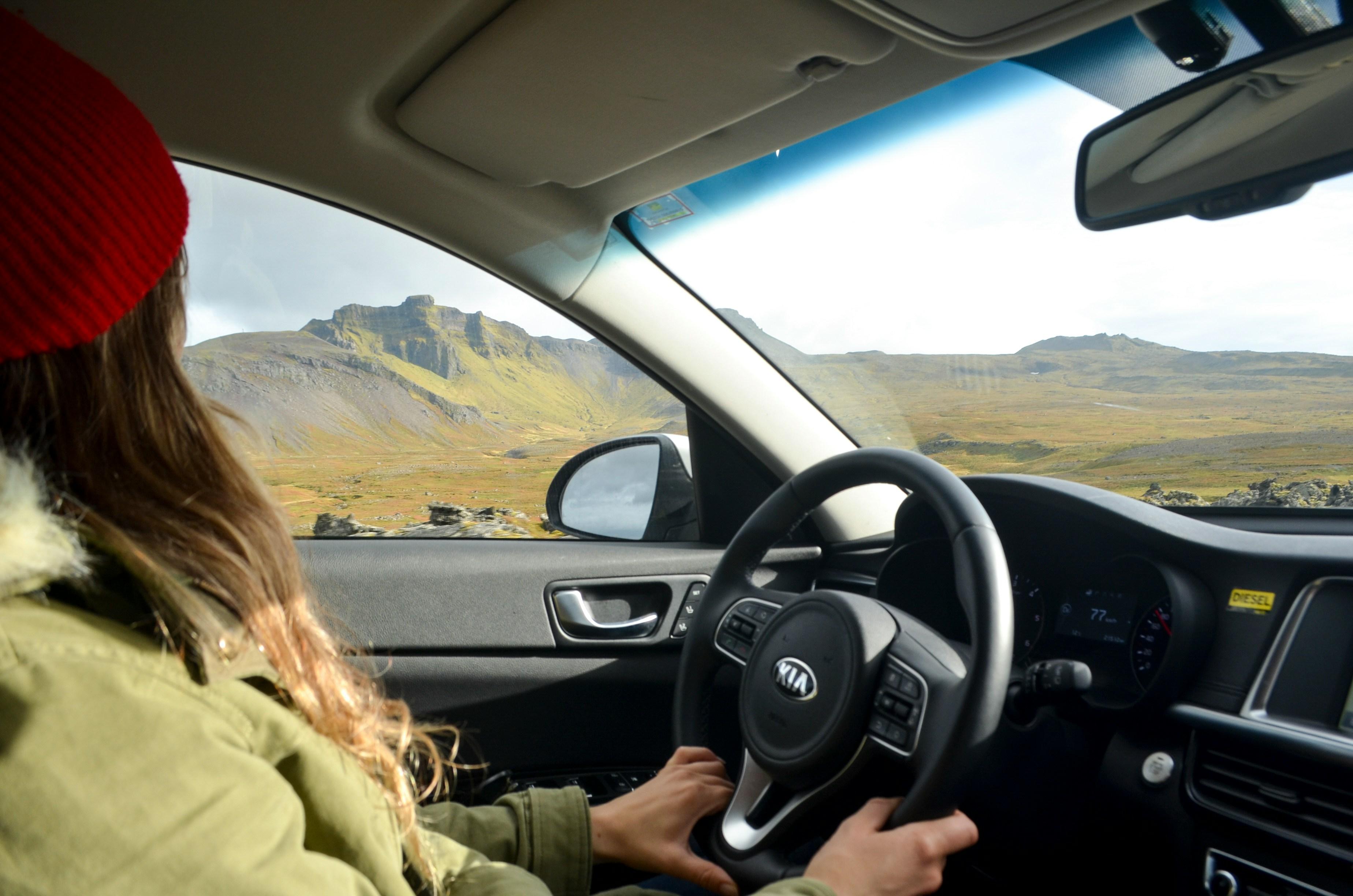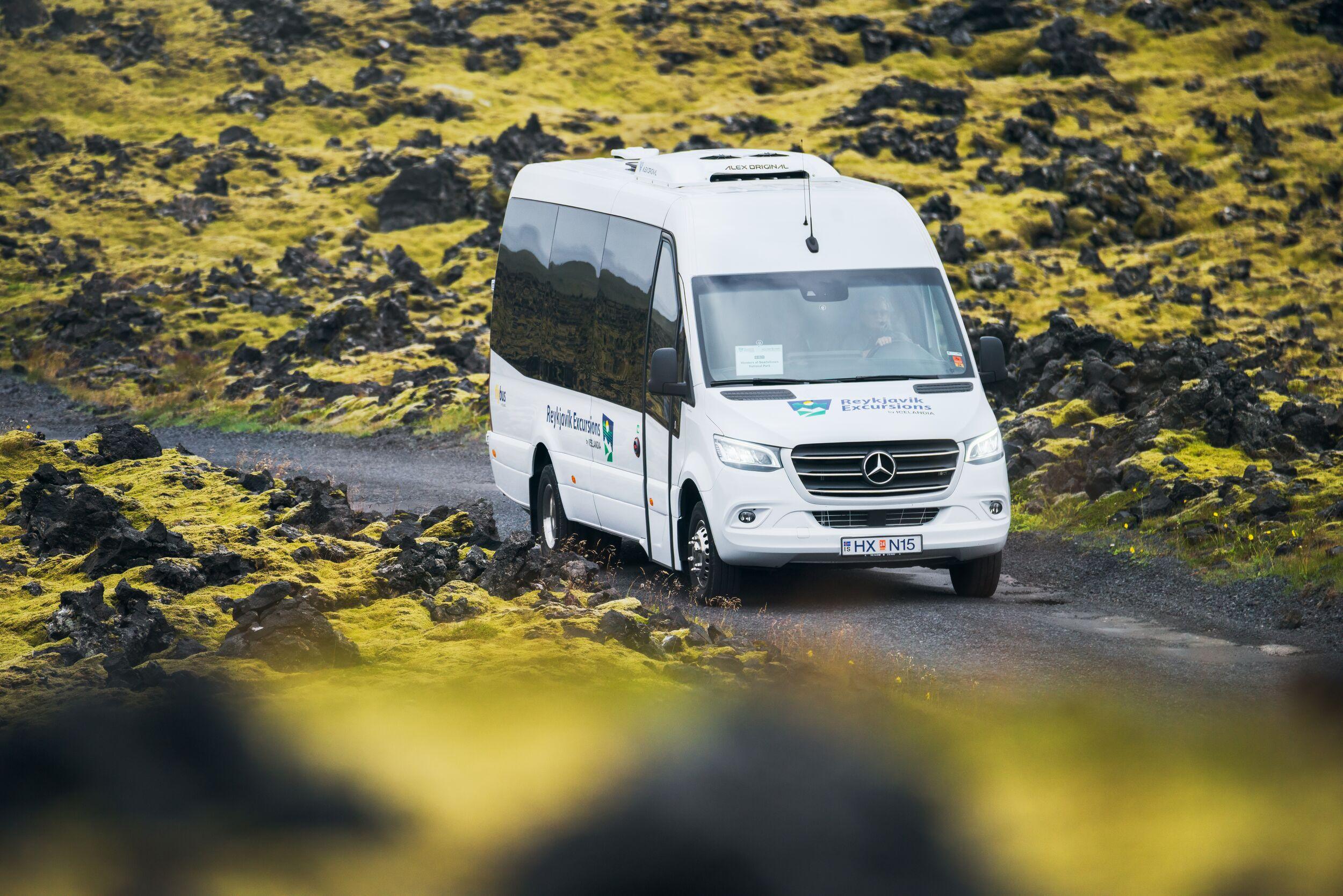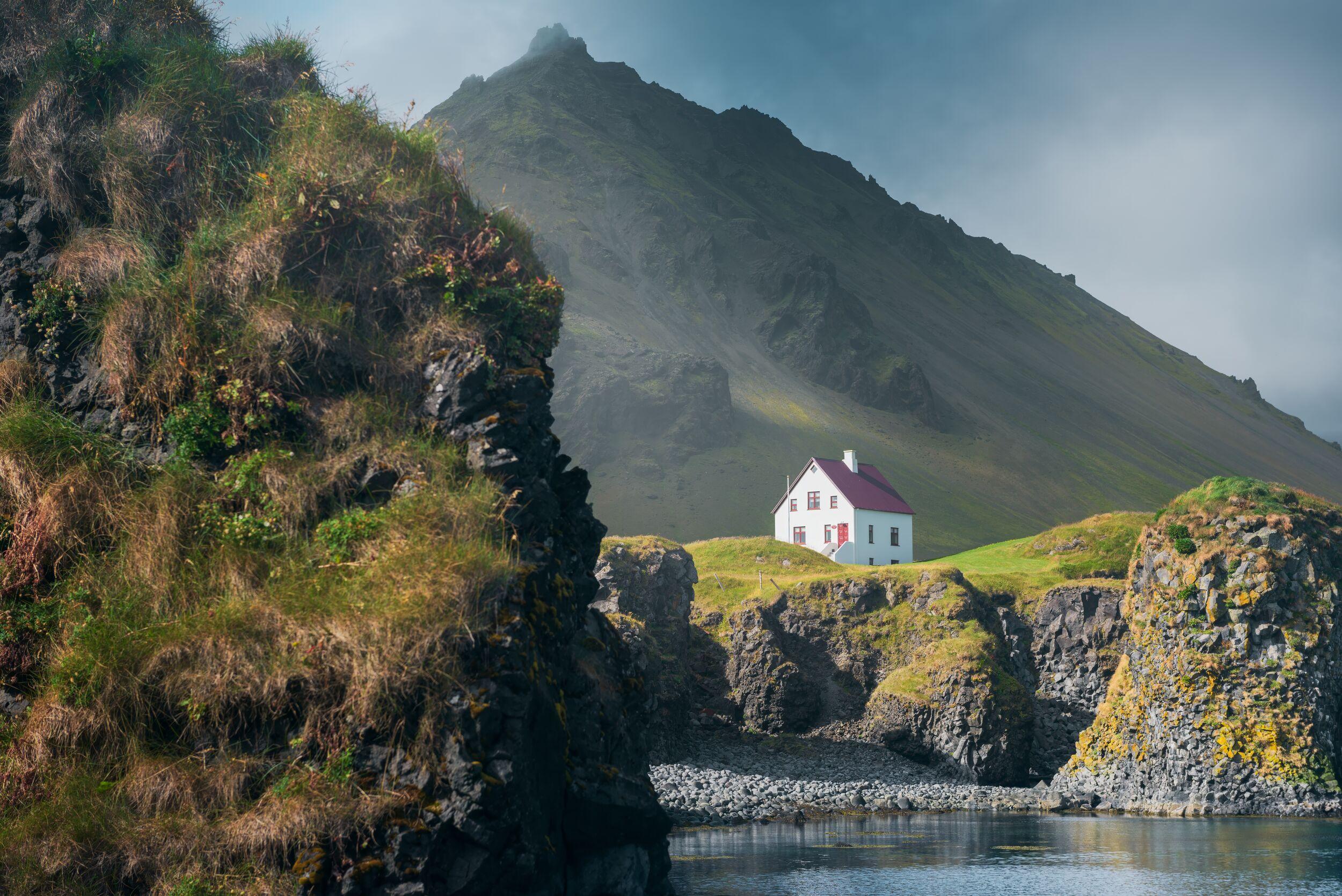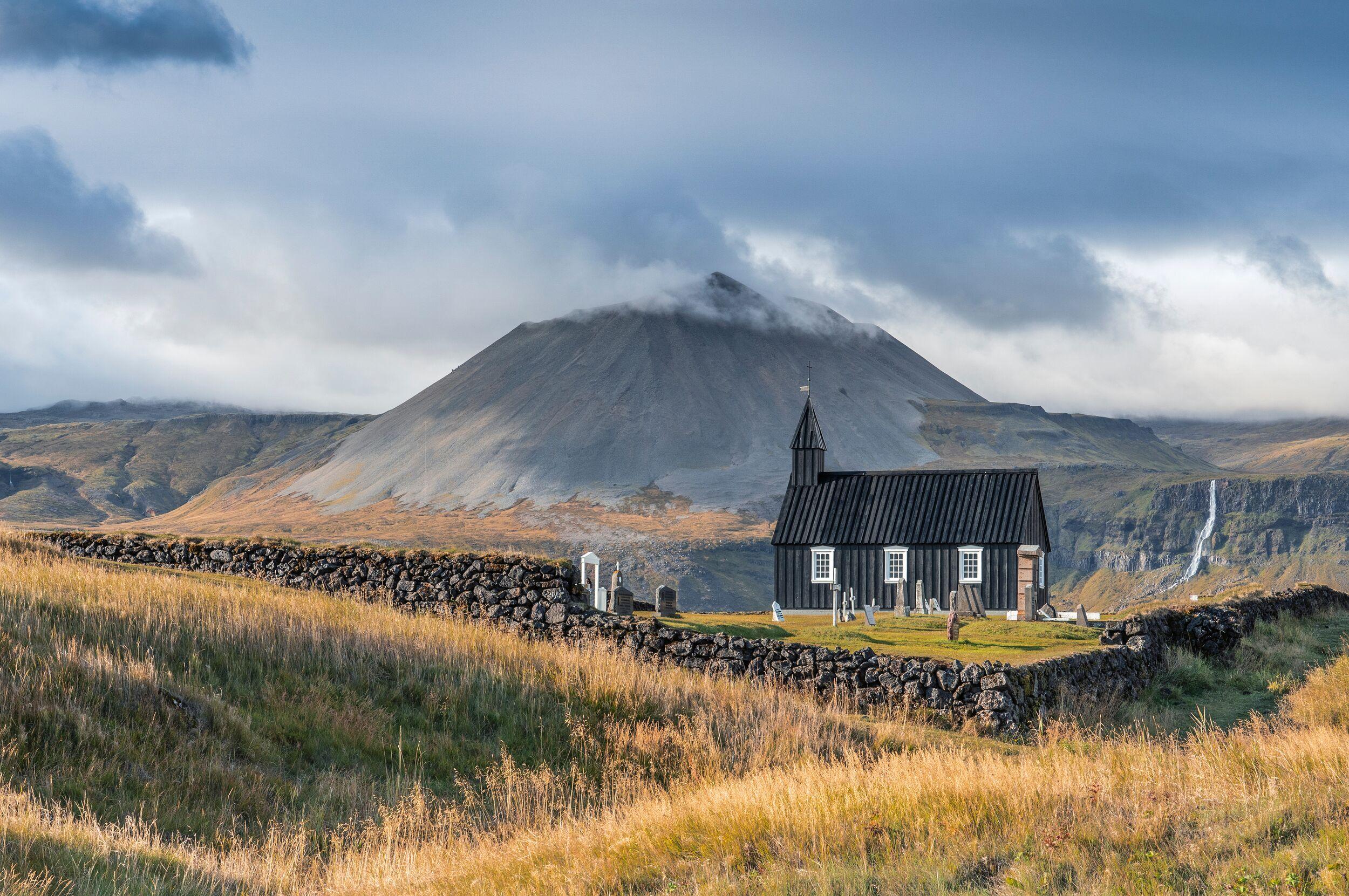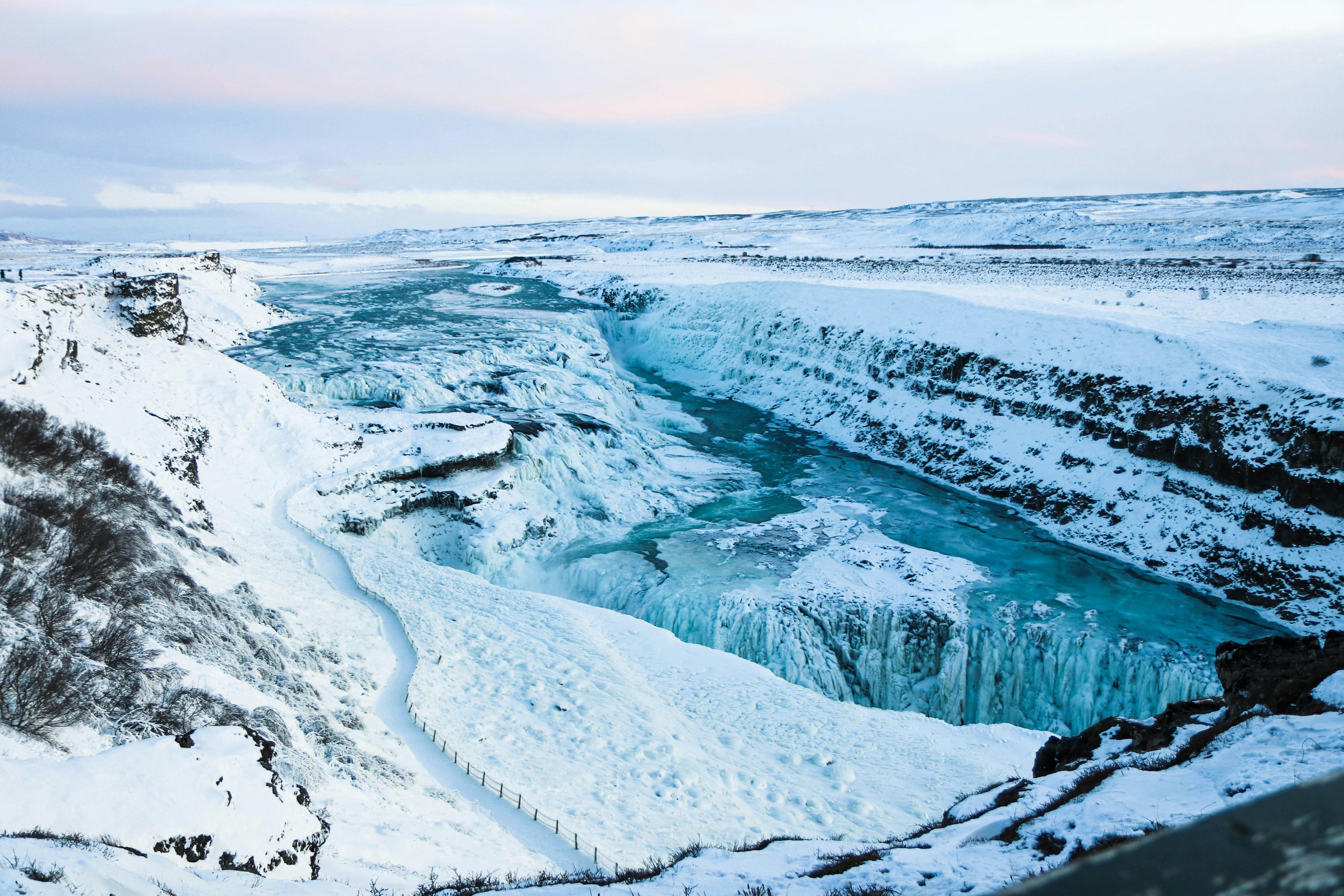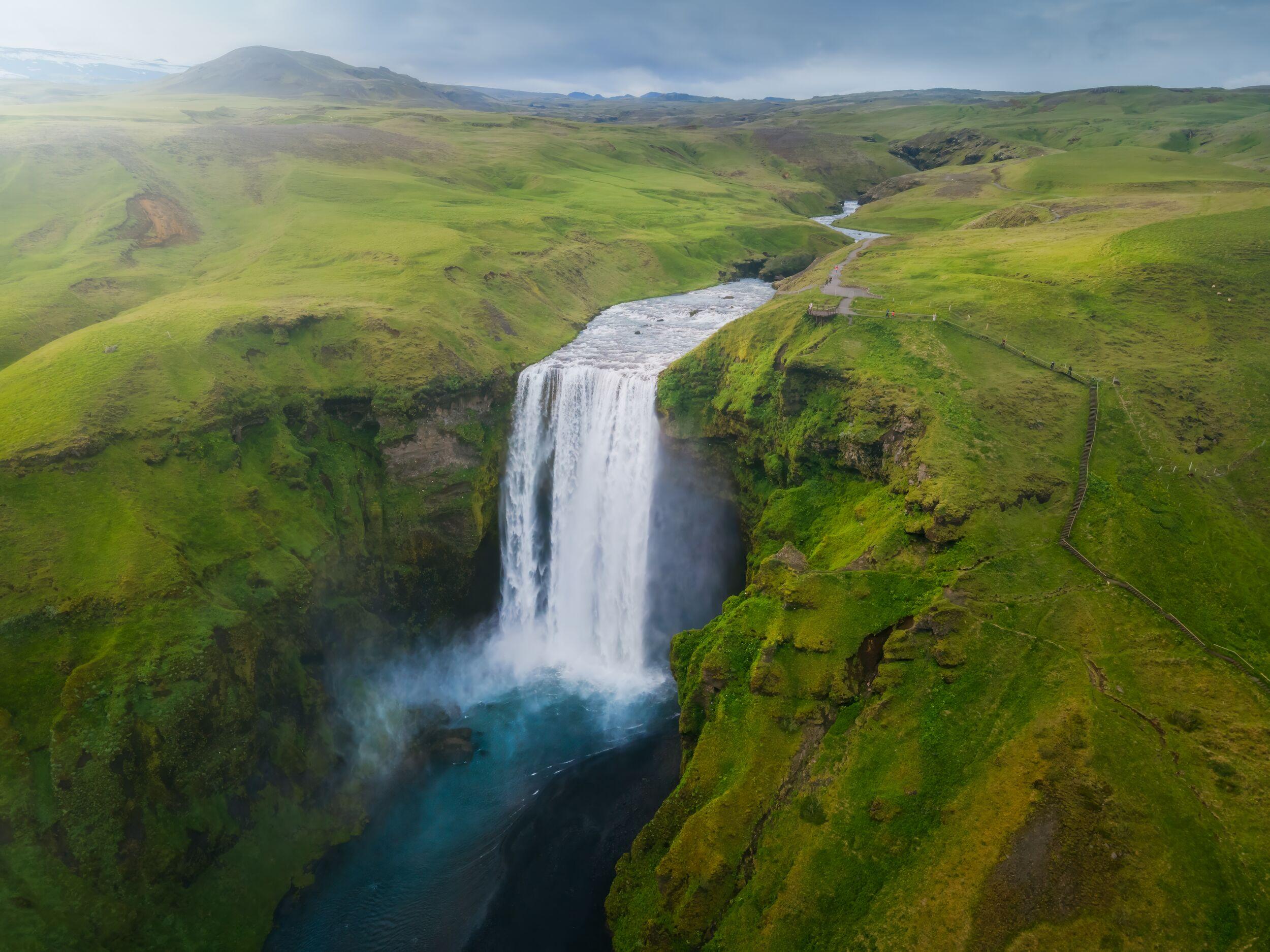Planning the Perfect Icelandic Road Trip: Routes and Tips
Iceland’s extraordinary landscapes make it a popular road trip destination. Itineraries cover glorious single day drives to multi-week adventures, with plenty of opportunities to book activities and guided tours along the way to enhance your experience. As well as describing some of the most scenic routes in the country, this guide will also tell you what you need to know to make this a memorable holiday.
We’ll include practical advice on how to cope with Iceland’s unique driving conditions to the lowdown on local laws and driving etiquette. With suggestions on where to break your journey and which of our tours make ideal things to do along the way, here’s how to plan the perfect Icelandic road trip.
How Long Do You Need For an Icelandic Road Trip?
Driving in Iceland is often a pleasure but it can be tricky to figure out how far you can travel in the time that you have at your disposal. If you plan to hire a car for a day or two, then realistically you should stay close to Reykjavik. You might, for example, loop the Snæfellsnes peninsula to make the most of its dramatic coastal scenery.
Another option could be to spend a little longer seeing more of the Golden Circle region. This would make it easier to add in a few activities alongside the main three attractions. For instance, you might choose to snorkel at Silfra Fissure, ride a snowmobile on Langjökull glacier , soak in the warm waters of Laugarvatn Fontana or join a thrilling ATV tour.
With a week at your disposal, you have the time to cast your net a little wider. A popular option is to drive along the spectacular south coast before turning back for Reykjavik. You might stay for a few nights in or close to Vik. Some of our most fun glacier-related tours depart from near this convenient base. You could plan an adventurous winter excursion to one of Mýrdalsjökull’s ice caves, kayak across the lagoon in front of Sólheimajökull glacier or visit the crashed DC-3 at Sólheimasandur.
A week is just about enough to loop the ring road but rather than rush, we recommend taking two weeks or more. This means that you can enjoy more activities and take more detours than you might if you had to cover a greater number of miles each day. Alternatively in a fortnight you might take the road less travelled and explore the remote Westfjords, hopping on the ferry back to Stykkishólmur in Snæfellsnes when you’re ready to return to Reykjavik.
The more time you spend in Iceland’s landscapes, the deeper the experience – nature reveals its secrets slowly to those who stay and listen.
Planning and Preparation: Weather, Roads, Driving Rules
Weather
Iceland’s changeable weather can sometimes cause a few headaches for road trippers. In summer, there’s a much greater chance of fine weather, but snowfalls and windy days are still a possibility. Between autumn and spring, the chance of more challenging driving conditions increases, so decide whether taking tours might be less stressful – especially if you live somewhere that’s usually mild throughout the year.
It’s a good idea to build in some flexibility into your plans if you intend to do a road trip off-peak. Occasionally roads can be temporarily closed, meaning that you might need to wait it out before continuing on to your next destination. No matter when you come, stay abreast of current and forecast weather conditions using a reliable local source such as the Icelandic Met Office’s website.
Seasonal changes
After the weather, the biggest impact of the seasons on your road trip is likely to be the amount of daylight. In summer, it stays light late into the night and so you’ll have plenty of flexibility in planning your Iceland itinerary. This is a great time for road tripping at an unhurried pace, though parking at popular spots can prove tricky. It can be an exercise in patience and you may prefer to opt for guided tours to the more crowded visitor attractions.
In winter, the days shorten considerably. You won’t be able to fit as much sightseeing into each day if you come in December or January, and you may find that you’re driving at night which may be something you’d prefer to avoid. But on a sunny winter’s day, Iceland can be at its most magical – a very tempting prospect. Read Safe Travel’s guide to winter driving and you’ll feel a lot more prepared.
Types of road
Before finalising your Iceland road trip itinerary, take a close look at the type of roads along the route you plan to follow. Driving conditions – and therefore the speed at which it is safe to drive – vary considerably. On the best roads, such as Route 1, you’ll drive over a well-maintained tarmac surface. Gravel roads, particularly those in flatter areas, aren’t too daunting so long as you maintain an appropriate speed.
Only experienced drivers should contemplate driving Iceland’s F-roads. These roads open seasonally for a few short months in summer and are not only heavily potholed in places, some also require river crossings. Be realistic about your driving skills and capabilities – for peace of mind, it’s most certainly worth considering a tour. Off season visits by super jeep are also possible where access to the highlands isn’t possible in a regular car.
Rules of the road and driving etiquette
Knowing local laws and being aware of driving etiquette is a must before you set out behind the wheel on your Iceland road trip. To avoid being the recipient of a hefty fine, be sure to familiarise yourself with the speed limits of the different types of road. Another action likely to land yourself in hot water is to stop at the side of the road rather than in a designated parking place. No matter how quiet the road seems or how beautiful the scenery is, this isn’t safe.
Seatbelts should be worn at all times and even in daylight, it’s the law to ensure your headlights remain on. Other laws to be aware of include not using your phone when driving and ensuring that you are completely sober – alcoholic drinks can wait until you’re done for the day. In rural areas, be especially aware that livestock might stray into the road; lambs will follow their mother and have zero road sense. Good driving etiquette also means being a considerate driver. For instance, pay particular attention when approaching single lane bridges as you may need to give way to oncoming traffic.
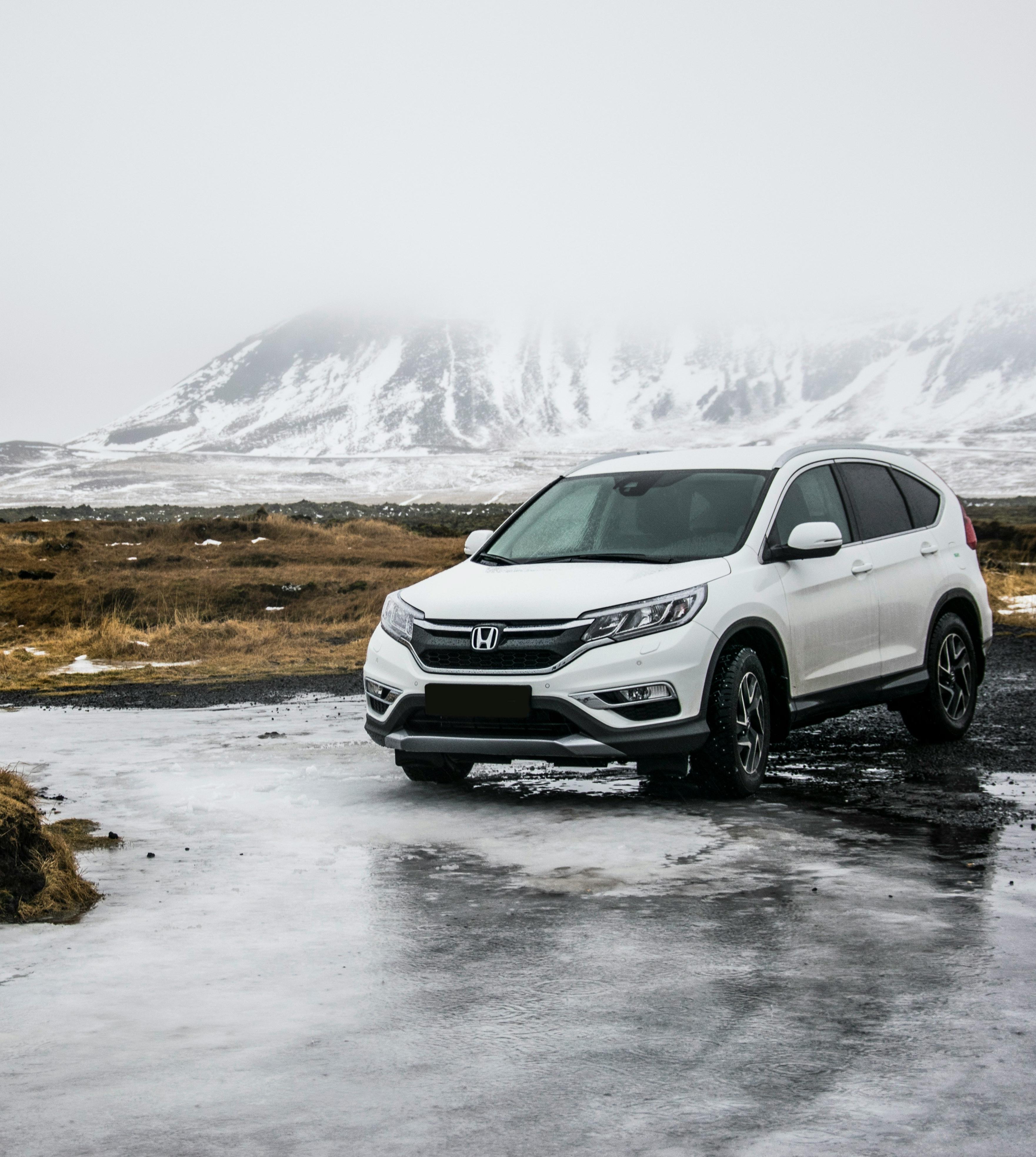
Driving in Iceland demands skill and winter experience – for those less familiar, guided tours offer a safer and more relaxing way to explore the country's beauty.
Things To Consider When Renting a Vehicle
Whether you need a 4x4
It’s a common misconception that you need a 4x4 when driving here. But as any self-respecting Iceland travel guide will tell you, it all depends where you want to go and in which season you plan to travel. If you’re unlikely to venture far beyond the ring road in summer, even the smallest compact is perfectly adequate. In icy conditions and on gravelly mountain passes, you’ll be glad of the extra grip afforded by a 4x4.
The type of vehicle
Choosing the right vehicle for your needs is also something to think carefully about – one size most certainly doesn’t fit all. In addition to the all-wheel drive debate, you might consider whether or not to hire an electric vehicle. This handy map of charging stations will ensure you always know where the nearest charging points are. Of course, booking a carbon neutral tour with us is another way you can reduce emissions compared to a regular rental.
Insurance
The number of different choices when it comes to insurance can also be confusing. If you expect to drive on gravel roads, it’s advisable to take out gravel protection insurance as it’s easy for vehicles to be damaged by stones. Sand and ash insurance is another add-on to consider; in stormy weather, wind can whip up loose material to the detriment of your paintwork so such a premium is a small price to pay for peace of mind.
Paperwork
Travellers of many different nationalities don’t need an international driving permit to be able to drive in Iceland. If renting a car for a short period such as a vacation, tourists from the EU, UK, US, Canada, Australia and Japan are just some of those who can simply bring their regular driving licence to the desk when they come to pick up the hire car. A minimum age requirement is in place: you’ll need to be at least 20 years old to rent a regular car and 23 for a 4x4.
Whether you’ll need a rental car for the whole trip
A hybrid approach takes a lot of beating when it comes to planning your road trip in Iceland. If you’re likely to be spending a few days in Reykjavik at the beginning or end of your trip, you won’t need a car. Instead of paying to park it, you can make use of the extensive city bus network, airport transfers and Hop On, Hop Off sightseeing service.
Cost out whether it’s better for your wallet to take day tours to do your sightseeing or rent a car; it depends on the size of your party as well as what you hope to see and do. Mixing up time in the car with time spent being more active will create a much more memorable holiday.
You’ll be glad you chose to intersperse your Iceland road trip sightseeing with horse riding, snorkelling, glacier hikes, ATV or buggy rides, whitewater rafting and kayaking trips – why not take a look at some of our bestselling adventure tours to get some inspiration?
Questions and Answers about Road trips in Iceland
The Snæfellsnes Peninsula encapsulates the essence of Iceland’s natural beauty, cultural richness, and historical significance. Its varied landscape makes it an ideal destination for those who wish to experience the diversity of Iceland without travelling far from the capital. Whether you’re looking for adventure, tranquillity, or a journey through history, Snæfellsnes promises an enriching and unforgettable experience.
You might recognise the Snæfellsnes peninsula if you’ve ever looked closely at a map of Iceland. It is the long, narrow peninsula that sticks out into the Atlantic on the west coast of the island. To the north, it sits on Breiðafjörður Bay, while Faxaflói Bay (which stretches all the way to Reykjavík) lies on the south coast of the peninsula. Snæfellsnes is around 135 kilometres (83 miles) from Reykjavík and the drive is around two and a half hours.
To reach the Snæfellsnes Peninsula, you can drive from Reykjavík, which is the most common starting point for trips to the peninsula. The drive typically takes about 2 to 2.5 hours one way, depending on the route and weather conditions. You'll want to head north from Reykjavík on Route 1 before turning onto Route 54, which will take you along the southern edge of the peninsula.
Alternatively, for those who prefer not to drive, there are organized day tours available from Reykjavík. These tours often include transportation and a guide who can provide insights into the area's unique geology, history, and folklore. Day tours can be a convenient and informative way to experience the highlights of Snæfellsnes without the need to navigate or plan an itinerary yourself.
The best time of year to visit Snæfellsnes depends on what you want to do when you get there. If spotting puffins is on your bucket list, then visiting Snæfellsnes between May and August is the best time of year when the birds are most active and you might see little puffin chicks. If hiking on the Snæfellsjökull glacier is your top priority, you’ll want to visit in the summer months when the daylight hours are at their longest, giving you the most time for the hike. Between September and March, glacier hikes do not run on Snæfellsjökull. Whale watchers should consider visiting Snæfellsnes between December and April when you’re most likely to spot orca whales out in Breiðafjörður Bay. Winter can be a beautiful time of year to visit the peninsula, when Kirkjufell mountain is covered in snow and you have the chance to spot the Northern Lights in the long hours of darkness, away from the lights of Reykjavík.
It really depends on how much time you have. Seeing most of the region’s highlights on a day tour is possible. Some travellers spend an afternoon in Snæfellsnes, while others plan for multiple days.
Perhaps stop off at the Gerðuberg cliffs, which are formed from striking basalt columns, like the kind you might see at Giant’s Causeway in Northern Ireland. Check out traditional Icelandic architecture at Búðakirkja – a dramatic black wooden church that sits within a lava field. But the most iconic sight on the peninsula is Kirkjufell Mountain which has featured in Game of Thrones and makes for a beautiful photograph due to its bright green hue, conical shape and ocean backdrop. There’s also plenty of opportunity to see wildlife at Snæfellsnes, like seals on Ytri Tunga beach, arctic terns and kittiwakes on the dramatic sea cliffs of Arnarstapi, and whale watching and puffin spotting boat trips from Grundarfjörður.
Driving the entire Snæfellsnes Peninsula, following the main road that loops around, takes about 3 to 4 hours without stops. However, you might want to allocate a full day or more with stops at significant sights to enjoy the area thoroughly.
There are plenty of overnight accommodation options across the Snæfellsnes peninsula, from guesthouses and cabins out in the stark wilderness to hotels and B&Bs within walking distance of restaurants and shops. Stykkishólmur is the largest town on the peninsula, so it has the widest selection of accommodation and a handful of restaurants and grocery shops. You can also find campsites across the peninsula and places to stay in the heart of the wilderness. Almost at the very tip of the peninsula, there are a few places to stay around Arnarstapi where the dramatic rock features of the coastline attract keen hikers.
From Keflavik Airport, it is around 178 kilometres (111 miles) to the Snæfellsnes peninsula. Driving to Snæfellsnes from Iceland’s main airport takes approximately two hours and twenty minutes.
Don’t let the ‘æ’ intimidate you, Snæfellsnes is quite an easy Icelandic word to pronounce. It is said like Snay-fell-snes.
The Snæfellsnes peninsula is a great place to take the kids on a day’s adventure – you can introduce them to Icelandic folklore and let them experience the island’s unique scenery in one small space. There are short hikes suitable for families with kids and a smattering of towns and villages to stop and refuel throughout the day. You can rent a family-sized car and drive to Snæfellsnes peninsula yourself, or join a family-friendly Snæfellsnes peninsula tour that departs from Reykjavík.
The main thing you’ll want to do on Snæfellsnes peninsula is to explore the varied landscape – ice caps, lava fields, basalt cliffs and rugged hills. Those seeking active adventure can join a glacier hike at Snæfellsjökull National Park or perhaps descend into an 8,000-year-old lava tube at Vatnshellir Cave. If taking it easy is more your thing, you can embrace Iceland’s bathing culture in naturally-heated pools at Landbrotalaug hot springs. A different kind of bravery is involved at Bjarnarhöfn Shark Museum where you can try the famous Icelandic delicacy of hákarl, aka fermented shark.
Snæfellsnes is not on the route of the Golden Circle, but it has its own selection of natural highlights. Day trips around the Snæfellsnes peninsula also leave from Reykjavik and some say the landscape is just as beautiful as along the Golden Circle. Stops along the Snæfellsnes peninsula include chasing tumbling waterfalls, the possibility of a glacier hike at Snæfellsjökull, visiting pretty fishing villages and spotting puffins on clifftop walks.
Apart from Stykkishólmur, the largest town on the peninsula, Grundarfjörður is a good option for an overnight stay. There’s a selection of simple hotels, guesthouses and apartments, a couple of places to eat and plenty of things to do on your doorstep. Whale watching tours out into Breiðafjörður Bay leave from Grundarfjörður’s little harbour and from the town, you can walk to the famous Kirkjufell mountain. Ólafsvík is another coastal town on the north shore of the peninsula where a scattering of simple hotels, hostels and apartments sit by the sea.
If you are planning a Snæfellsnes Peninsula self-drive from Reykjavík, you’ll need to take the main Route One road from the capital to Borgarnes and then join Road 54 to reach Snæfellsnes. Both are main roads and are often cleared of snow in December, but winter driving in Iceland can be challenging in general, especially if you get caught in a blizzard. The Snæfellsnes peninsula can experience high winds in winter. Always check the SafeTravel app before you leave to keep up to date with road closures and weather warnings. The safest and easiest way to get to the Snæfellsnes peninsula in December is to join an organised tour from Reykjavík. Let someone else take care of the driving and itinerary so all you have to do is enjoy the scenery.
Jutting out into the North Atlantic Ocean, there is often a bracing wind blowing across the Snæfellsnes peninsula, so dressing in a waterproof windbreaker jacket is a good idea. It’s all about outdoor adventures here and most people visit to hike along cliff tops or take a boat out to spot puffins and whales. In winter, you’ll want to wrap up warm with layers of woolly jumpers, hats, scarves and gloves, maybe even thermal layers in the coldest months. Sturdy, waterproof walking boots are the best footwear for Snæfellsnes.
Close to the Snæfellsnes peninsula and on the way to and from Reykjavík, there are plenty of must-see attractions. You can pause to refuel and refresh at Borgarnes and admire the beauty of the area around the Borgarfjörður fjord where the majority of the Icelandic Sagas were set. The nearby region of Húsafell is a short drive from Snæfellsnes where you can bathe in the naturally heated water of the Krauma Spa, which is geothermally powered by Europe’s most powerful hot spring. In Húsafell, you’ll also find Iceland’s second largest glacier, Langjökull. Here, you can embark on a monster truck adventure onto the glacier’s surface or explore a man-made ice tunnel through the glacier which is open year-round.
The Snæfellsnes Peninsula is an excellent spot for viewing the northern lights when it is dark enough, with no cloud cover and plenty of solar activity, thanks to its dark skies and minimal light pollution.
A great stopping point between Akureyri and Snæfellsnes is Hvammstangi, known for its seal-watching opportunities, or the historic town of Stykkishólmur on the peninsula’s north side.
Snæfellsjökull translates to “Snow Mountain Glacier” in Icelandic, referencing its prominent snow-covered peak visible throughout the year.
Snæfellsjökull is considered a dormant volcano, having last erupted around 1,800 years ago, and is not currently active.
There is no entry fee for Snæfellsjökull National Park itself, but guided tours, especially those involving glacier hikes, can vary in cost based on the provider and length of the tour.
Yes, you can climb Snæfellsjökull, which is one of Iceland's famous glaciers and located on the Snæfellsnes Peninsula. Climbing Snæfellsjökull is a popular activity for those visiting the area, offering a chance to experience the stunning views from atop the glacier.
The climb is typically done as a guided tour, which is highly recommended due to the challenging nature of glacier hiking and the specific safety equipment required, such as crampons and ice axes. These guided tours also provide valuable insights into the glacier's geography and the surrounding environment.
The hike itself can be quite demanding and is suitable for those in good physical condition. The weather can also significantly affect the climb, so it's important to be prepared for sudden changes in conditions and temperatures. Climbing Snæfellsjökull provides a unique adventure and a panoramic view of the surrounding landscapes, making it a memorable part of visiting Snæfellsnes.
It is not. Although it's unlikely we will be alone for our entire tour, this is a road far less traveled than the classic and very popular Golden Circle for example or the highlights of the South Coast. The main reason is that this is a longer tour, and slightly further from Reykjavik with lesser known but no less beautiful attractions.
The Golden Circle showcases Iceland’s most famous highlights close to Reykjavík — Thingvellir, Geysir, and Gullfoss. The Snæfellsnes Peninsula, often called “Iceland in Miniature,” offers a more diverse and less crowded experience. In a single day, you’ll see volcanic peaks, black-sand beaches, glacier-topped mountains, lava fields, waterfalls, and fishing villages — a condensed version of all Iceland’s landscapes in one region.
There are plenty of accommodation options on the south coast of Iceland. The seaside village of Vík has several simple hotels, B&Bs and hostels to choose from. All along the south coast’s Route One main road, you’ll find isolated farm cabins that offer a night out in the Icelandic countryside, perhaps waking up to the view of a tumbling waterfall or a dramatic mountainscape. In the Skaftafell area, you’ve got guesthouses, hotels and plenty of campsites, and the peninsula town of Höfn has a decent selection of places to stay at the easterly end of the south coast.
To cover all of the south coast, including spending time exploring the beautiful scenery of Skaftafell and Jökulsárlón Glacier Lagoon, you should allow at least two days. Three days would allow you to spend time on the hiking trails of Skaftafell.
If chasing waterfalls is your thing, then stopping at Seljalandsfoss where you can walk behind the waterfall’s cascade is a must-see sight along with Skógafoss where rainbows dance in the waterfall’s spray. The ethereal basalt rock cave and jet-black sand of Reynisfjara Beach make this an essential spot for anyone into photography or those that simply want to bask in Iceland’s unique scenery. For many, a glacier hike is a bucket-list experience and you can tick this off your list at Sólheimajökull glacier on the south coast. But the south coast sight that is considered the “jewel in Iceland’s crown” is Jökulsárlón Glacier Lagoon – the iceberg-filled lake at the easterly end of the south coast.
The south coast of Iceland is full of adventurous activities for those that love the outdoors. ATV and buggy rides along the black-sanded beach end at the haunting wreck of an aircraft. Ziplining over the rivers and lava fields of Iceland’s unique landscape is on offer just outside Vík and here you’ll also find the informative lava experience and a couple of local museums. There are also opportunities to go hiking at Skaftafell, and even several places to embark on a glacier hike on the south coast.
With few significant towns and villages along the south coast, it’s the ideal place to spot the Northern Lights. There is very little light pollution in this part of the island so when the sky is clear enough, the Northern Lights seem to glow all the brighter out here. One of the most popular places to spot the Northern Lights on the south coast is at the Diamond Beach where the sea and shards of ice on the sand reflect the glowing green light.
The south coast is home to some of Iceland’s most magnificent natural wonders. Along this route, you’ll find the waterfalls of Seljalandsfoss and Skógafoss, the black-sanded beach of Reynisfjara and you can spot the famous Eyjafjallajökull ice cap from the roadside. You can experience the sight of a typical wood-clad church on a hill at the coastal village of Vík, and further along the south coast lies the unique sight of Jökulsárlón Glacier Lagoon where icebergs float in the serene waters. Just across the road, the Diamond Beach is scattered with shards of ice on black sand – it’s a photographer’s dream.
In terms of sightseeing, Iceland’s south coast is generally considered to be the southern section of the island that runs along the Atlantic from Þorlákshöfn to Höfn. It roughly follows the southern route of the Route One ring road that loops around the entire island. From Reykjavík, you follow Route One towards Selfoss and can stop at the myriad waterfalls, beaches and glaciers along the way.
It is possible to hit the highlights of the south coast – Reynisfjara black-sanded beach, Seljalandsfoss and Skógafoss waterfalls and even a glacier hike on Sólheimajökull – in a single day from Reykjavík. In fact, many organised tours cover this and similar itineraries on day tours from the capital. While it is possible to also see the very easterly sights of the south coast (like Jökulsárlón Glacier Lagoon and the Diamond Beach) in a single day from Reykjavík, it would be a very long day and you would inevitably miss some of the key sights along the way. It’s a good idea to spend the night somewhere around Skaftafell or Höfn if you want to see the very easterly part of the south coast.
You’ll find that most major sights along the south coast of Iceland have a visitor’s centre and café to refuel as you go. Most of these cafés will serve hearty lunches of hot soups, stews and big sandwiches. In the village of Vík, there are several gastropubs and a couple of restaurants. Guesthouses and farm cabin accommodations often come with a home-cooked meal and breakfast served by farmers and their families. Of course, this is Iceland, so the ubiquitous hot dog counters you’ll find at nearly every petrol station are an option for a quick, satisfying bite.
From Reykjavík, it is around 400 kilometres to the end of the south coast route, so you could drive the entire thing in four to five hours without stopping. Of course, there are loads of sights and wonders to distract you along the way. To experience the entire route in-depth with stops at waterfalls, glaciers and black-sand beaches, you’ll want to allow a full day if not two days.
The Golden Circle is one of Iceland’s most appealing drives. This 190-mile long scenic route loops through some of the country’s most extraordinary landscapes and is visited by a large proportion of visitors to Iceland.
While the colour gold has connotations of first place, implying the Golden Circle is the number one activity you should plan in Iceland, the name comes from Gullfoss waterfall which translates as “golden falls” in English. Legend has it that a Viking threw his treasure into the waterfall’s plunge pool so that nobody could take his riches after he died, and that is where the name Gullfoss comes from. Others say it is simply because the falls have a golden hue when the sun hits them, due to the sediment carried down from glacial valleys.
The Golden Circle traces its path through southern Iceland, typically starting and concluding in Reykjavík. A journey encompassing the wonders of Thingvellir, Geysir, and Gullfoss guides you across the southern uplands, initially venturing inland before looping back to Reykjavík along the scenic south coast.
Three main attractions anchor the Golden Circle and are featured on every tour: Thingvellir National Park, Geysir geothermal area and Gullfoss, one of Iceland’s most splendid waterfalls. Other key stops include Kerid Crater and historic Skálholt cathedral.
The Golden Circle spans approximately 250 kilometres (155 miles) and, without stopping, would take around three hours to drive. Of course, with stops you’ll want to allow a lot longer, around five to six hours just to hit the highlights and even longer if you want to embark on a glacier hike, try horseback riding or explore one of the walking trails at Þingvellir National Park.
The closest point on the Golden Circle to Reykjavik is Thingvellir National Park, which is about 30 miles from the capital with a journey time of about 45 minutes. Allow another hour to drive to Gullfoss, around 45 miles further to the north east.
Geysir sits between Thingvellir and Gullfoss, though it’s closer to the waterfall. To reach it from Reykjavik you’re looking at about 1 hour 45 minutes to cover the 65 miles regardless of whether you take the northerly route along roads 36 and 37, or south along Route 1 (the country’s ring road) and then the 35.
It takes anywhere between six hours for an express Golden Circle tour from Reykjavik to three days for a more comprehensive itinerary. The shortest tours are a good introduction for first-timers but you won’t regret allowing yourself extra time to explore the area more fully and take an unhurried dip in one of its geothermal baths.
Yes, you can swim in certain parts of the Golden Circle. One of the most unique experiences is swimming between the tectonic plates at Silfra in Þingvellir National Park. If you book a guided tour, you can snorkel or dive in the crystal-clear waters of Silfra, which is a fissure between the North American and Eurasian tectonic plates.
In addition to this, there are other swimming opportunities around the Golden Circle:
Secret Lagoon: Located near the town of Flúðir, the Secret Lagoon is a geothermal hot spring where you can relax in warm waters amidst a natural and rustic setting.
Laugarvatn Fontana: This is a geothermal spa located by Lake Laugarvatn. Not only can you swim in the geothermal waters of the spa, but you also have the opportunity to swim in the cold lake. After a refreshing dip in the lake, you can quickly warm up in a sauna or enjoy a geothermal hot spring steam bath.
These swimming experiences provide a unique way to immerse yourself in Iceland's stunning natural landscapes and make the most of your trip to the Golden Circle.
The Golden Circle's attractions can undeniably draw crowds, particularly during peak season. Yet, its popularity is well-earned, showcasing some of Iceland's most breathtaking natural wonders. If you're a first-time visitor, the Golden Circle is a must-see. Despite the crowds, vast open spaces allow visitors to find their own secluded spots.
For instance, at Thingvellir, many visitors stay close to the parking area, but a brief walk offers a more tranquil experience. Over at Geysir, ascending the nearby hill takes less than an hour and rewards you with panoramic views of the geothermal marvels, including Strokkur's eruptions, away from the people. Similarly, at Gullfoss, while many gather at the main viewing platforms, a walk along the waterfall's path unveils less frequented vantage points.
These off-the-beaten-path perspectives not only offer respite from the crowds but provide unique, postcard-worthy views untouched by the typical tourist lens. So, should crowds be a concern, remember that tranquility is just a few steps away.
Friðheimar tomato greenhouse is a unique dining experience where you can sample tomatoes grown in geothermally-heated greenhouses in all their dishes. This is a popular additional stop on the Golden Circle. There are also cafes at Þingvellir, Gullfoss and Geysir serving warming soups, chunky sandwiches and hot meals packed with Icelandic produce. If you want to embrace modern Icelandic tradition, opt for one of the ubiquitous hot dogs at any of the petrol stations along the way. Icelandic hot dogs are made from organic lamb meat so are a little different from your average hot dog.
The Golden Circle is a circular route beginning and ending in Reykjavík, taking in the highlights of Iceland’s unique scenery. Over approximately 250 kilometres (155 miles), it takes in Þingvellir National Park where the continental plates meet, Gullfoss waterfall and the Geysir area of geothermal activity. There are additional sights along the route to stop at, but those three are the main attractions.
Yes, there are plenty of toilet stops along the Golden Circle. All the major attractions have public toilets, cafés, restaurants and souvenir shops. Smaller sights like Kerið volcanic crater don’t have toilets, but you can stop at petrol stations along the route if you need to as well.
Apart from the absolute basics of the Golden Circle – Þingvellir National Park, Gullfoss waterfall and Geysir geothermal park – there are a few other highlights along the route. Kerið volcano crater is a quick and easy stop and the Secret Lagoon is a popular addition to the route to soak tired muscles after seeing the sights.
You’ll want to stop for lunch too, and while there are cafes at most of the main attractions, some Golden Circle tours offer a stop at Friðheimar tomato greenhouse to sample the menu and see how tomatoes can be grown in near-Arctic conditions.
No, you should not skip the Golden Circle in Iceland. The Golden Circle is one of the most iconic and popular routes in Iceland, offering a fantastic showcase of the country's natural wonders that encapsulate Iceland's essential beauty. Given the proximity of these attractions to Reykjavik, it's an accessible and doable day trip for most travelers. If you're visiting Iceland, experiencing the Golden Circle is a unique opportunity that shouldn’t be missed.
Both! If you choose to explore independently following a self-drive itinerary – or with a private guide – you can set your own pace. Opting for a guided tour gives you the benefit of insightful commentary which will provide useful context for first-time visitors. Also, you can give your full attention to the scenery as you won’t need to concentrate on the road.
There’s no bad time to visit the Golden Circle. Summer offers the best odds for good weather and plenty of daylight so you won’t feel rushed on a day trip. The shoulder seasons of spring or autumn tend not to be as busy, while in winter, the area is breathtakingly beautiful under a blanket of snow.
In short, yes. The Golden Circle route is open to visitors throughout the year, including during the winter. However, occasionally, bad weather can lead to road closures. If you’re not confident driving on snow or in icy conditions, you might prefer to take a tour instead of driving yourself.
Yes, lots. On or close to all the main routes you’ll find hotels, lodges, guesthouses and campsites to suit every budget. If you’re keen to spend more than a single day touring the Golden Circle area, staying overnight means you’ll avoid an unnecessary return trip to Reykjavik.
You’ll want to wear comfortable shoes and weather-appropriate clothing before setting out on the Golden Circle route. A camera is a must, so make sure your battery is fully charged. If you’re planning on visiting one of the area’s geothermal pools then don’t forget to bring your swimsuit.
Definitely. Children of all ages will be wide-eyed with wonder at the sight of such a huge volume of water tumbling over the rock at Gullfoss or watching as Strokkur, Iceland’s largest geyser, erupts. Many paths are well-graded and some are suitable for pushchairs, though a baby carrier is more manageable over rough terrain.
The Golden Circle is a rewarding detour off the ring road accessible from Selfoss in the south or turn inland at Mosfellsbær if you’re further west. For those on a Reykjavik city break, it’s an easy day out from the capital. In summer, adventurous travellers might consider heading further into the Highlands from Gullfoss as they tackle one of Iceland’s famously challenging F-roads.
Grindavík is an attractive town on the south coast of the Reykjanes peninsula. It’s home to many guesthouses, campsites, and restaurants, making it a really convenient place to stay or to stop on your journey around Reykjanes.
What’s more, many of the top sights of Reykjanes can be found close by. For example, the Blue Lagoon and the Fagradalsfjall volcano are both less than 10 minutes away, while the Bridge Between Continents is less than 20 minutes away.
Reykjanes is the peninsula to the southwest of the city of Reykjavík. Its southern tip is about 70 kilometres (43 miles) from the city—and about an hour’s drive. But many of the peninsula’s main sights are much closer than that.
The main city is Reykjanesbær, the fourth-largest city in Iceland. It’s made up of the towns of Keflavík and Njarðvík.
There are regular volcanic eruptions on the Reykjanes peninsula. This is because it sits on the Mid-Atlantic Ridge, which makes the region one of the most volcanically active areas in the world.
The Mid-Atlantic Ridge is a tectonic boundary where two continents are moving apart. Imagine that the whole of Europe is moving away from North America, and in the gap between these two tectonic plates lots of volcanoes are to be found.
This is exactly what’s happening at Reykjanes.
There are few places in the world that are as volcanically active as the Reykjanes peninsula. It’s been designated a UNESCO Global Geopark precisely because of its international importance.
Even if you’re not a geology buff, it still makes for a breathtaking experience. When volcanoes in the area erupt, it’s one of the safest places on the planet to see real lava. And when it’s not erupting, you can explore the fascinating landforms that these volcanoes have left behind.
Reykjanes is a perfectly safe area to visit. In fact, it’s recognised as one of the safest places to see volcanoes on the planet. Just make sure you bring some sturdy shoes and a rain jacket, just in case.
In 2021, 2022, and 2023, volcanoes on the Reykjanes peninsula have erupted. In 2023, the eruption occurred close to the Litli-Hrútur hill, just north of the previous Fagradalsfjall eruption sites. You could see fresh lava bubbling up and flowing down the side of a crater.
Eruptions in the area are really common, due to the very active volcanic systems on the Reykjanes peninsula. That’s why it’s been designated as a UNESCO Global Geopark.
The Reykjanes UNESCO Global Geopark designates much of the Reykjanes peninsula. Most significantly, the Geopark includes the area around Fagradalsfjall and the Geldingadalir volcano, to the northeast of the town of Grindavík.
The word Reykjanes is very similar to the word Reykjavík, but it swaps the last syllable “vík” for “nes”. Pronounce that final syllable how you would pronounce the last syllable of the English word “happiness”.
So, there are three syllables in Reykjanes, and the emphasis comes on the first.
The Reykjanes peninsula is one of the youngest areas of Iceland. That’s because it’s also one of the most geothermically active. Thanks to the Mid-Atlantic Ridge which passes through the area, new land is always being formed.
So, Reykjanes is likely to be as old as 6 or 7 million years old. Given that the rest of Iceland was formed over 20 million years ago, Reykjanes is really pretty young.
The Reykjanes Ridge is a part of the Mid-Atlantic Ridge, which stretches all the way south through the Atlantic Ocean. The Reykjanes peninsula is a continuation of the Reykjanes Ridge, but while the peninsula is above sea level, the Ridge is below the water.
The Mid-Atlantic Ridge can reach depths of 2.5 kilometres. But closer to Iceland, the Reykjanes Ridge is only about 300 metres (980 feet) below sea level.
Most volcanoes on the Reykjanes peninsula are fissure volcanoes. These aren’t the classic cone-shaped mountains that erupt in huge explosions of ash (although you can see one of those, Keilir, on the Reykjanes peninsula). Rather, fissure volcanoes are those where lava emerges from cracks or fissures in the ground.
As a result, their eruptions tend to be much more gentle. That’s why you can get quite close to the eruptions at Fagradalsfjall.
Keflavík is best known as the location of Iceland’s main international airport. However, it’s a pleasant town in its own right and a convenient place from which to explore the Reykjanes peninsula.
In Keflavík itself, you’ll find the Icelandic Museum of Rock ‘n’ Roll, for example, as well as the Viking World museum, home to a replica of a Viking ship.
The latest eruption in Reykjanes was seen in July 2023. This is another episode of a long period of activity in the Fagradalsfjall volcano system. The system has erupted three years in a row, in 2021, 2022, and 2023, most recently close to the Litli-Hrútur hill.
Even without a live eruption, the area makes for an incredible sight. Plus, it’s one of the safest places in the world to see an active volcano.
In July 2023, Fagradalsfjall began to erupt again for about three weeks. This area of activity was a couple of kilometres away from the eruptions of 2021 and 2022.
The volcano is no longer erupting. But in such a volcanically active area, the chances are that it won’t be long before the next one.
The name Reykjanes translates in English to “steam peninsula”. Even its name refers to its volcanic activity!
Related Articles
See all articlesTours and Activities for Independent Travellers
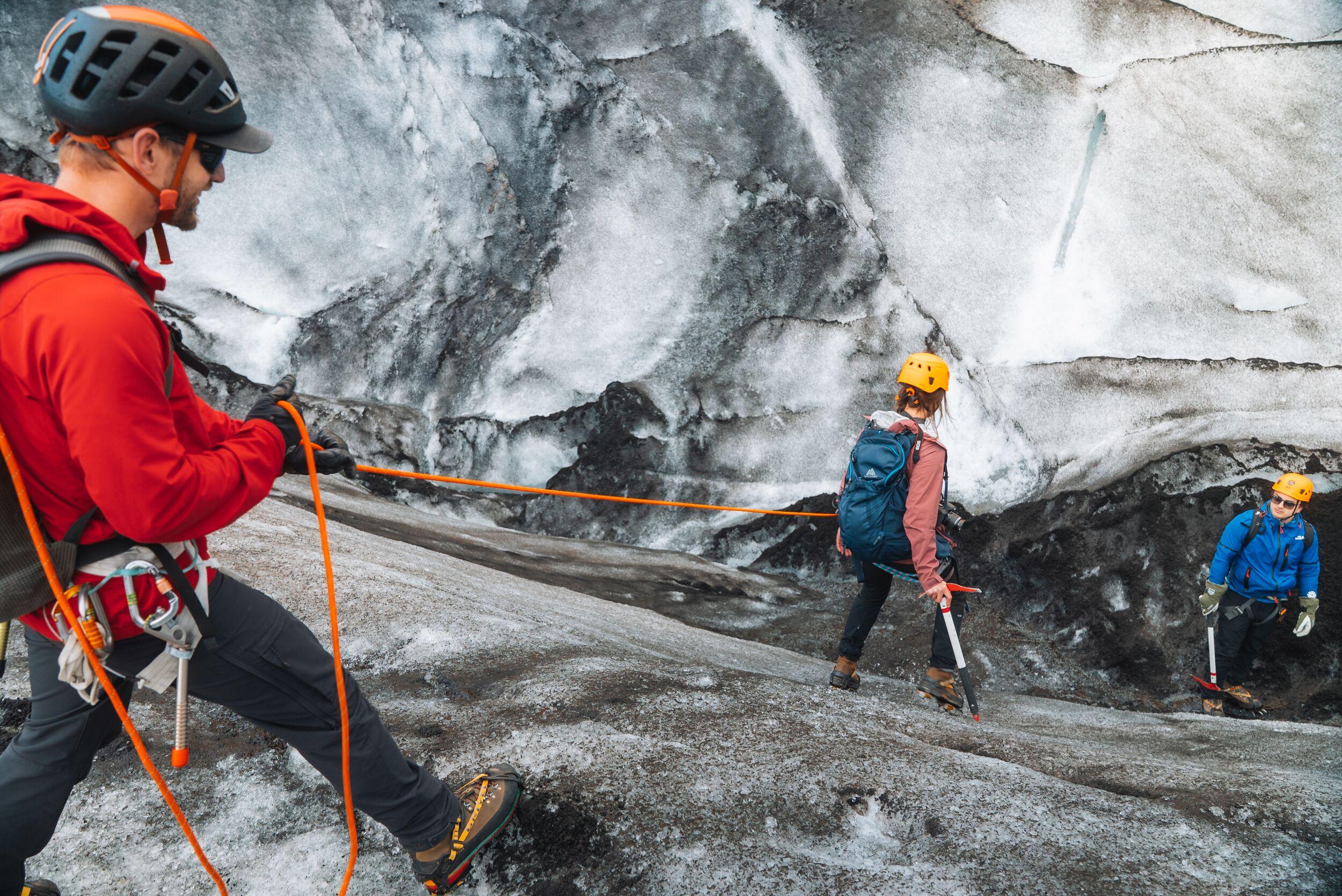
Glacier Exploration - 4-hour Sólheimajökull Glacier Hike
Hike on Sólheimajökull Glacier. See amazing blue ice formations, crevasses and learn about the Icelandic glaciers!
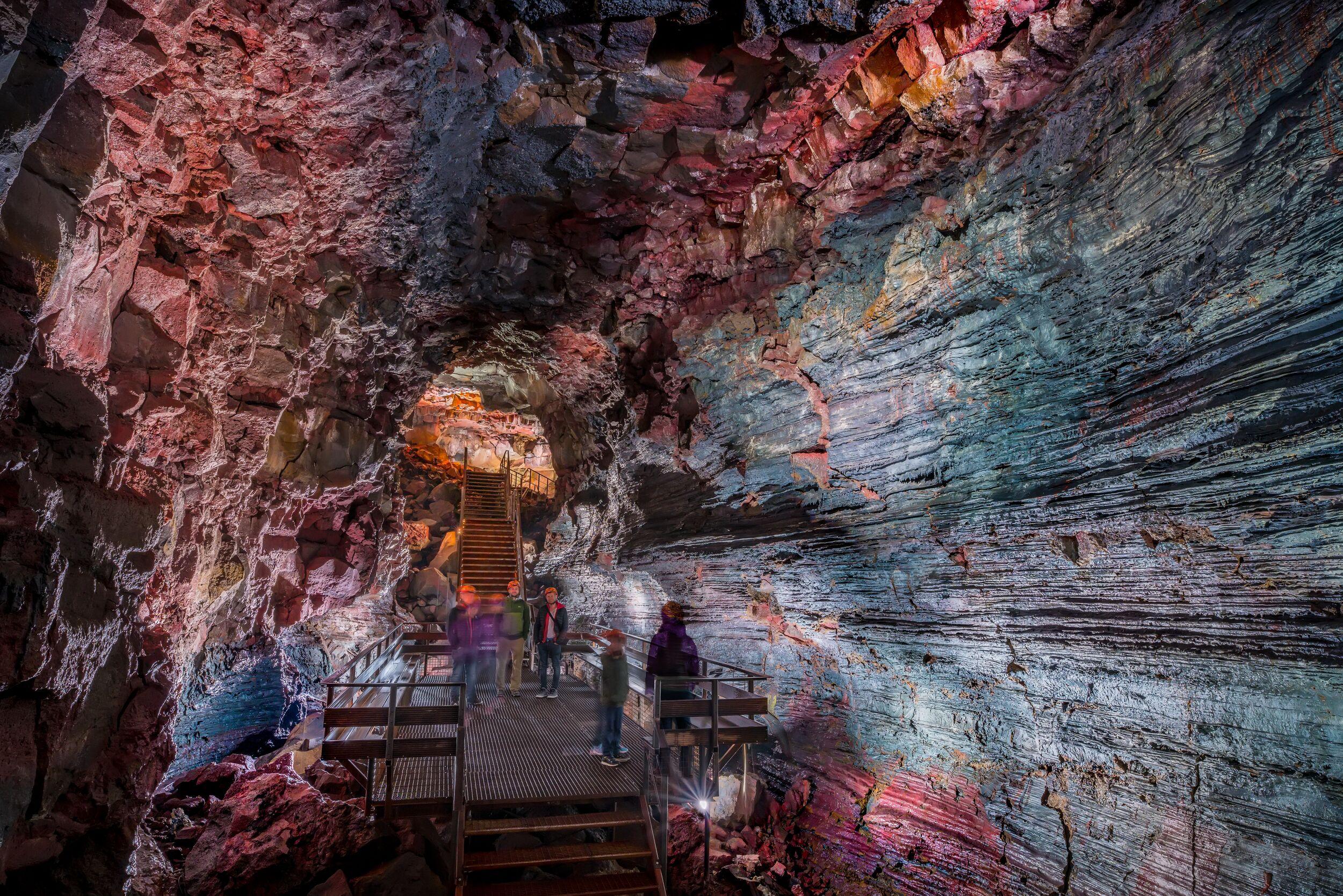
- Black Friday Sale

The Lava Tunnel
Delve deep underground on this adventurous lava tunnel tour, just 30 minutes from Reykjavík. Raufarhólshellir is an ideal tour for geology buffs and adventure-seekers. You will see the inner workings of a volcanic eruption while walking in the path of lava that flowed thousands of years ago. This is an easy, guided tour with no caving experience required
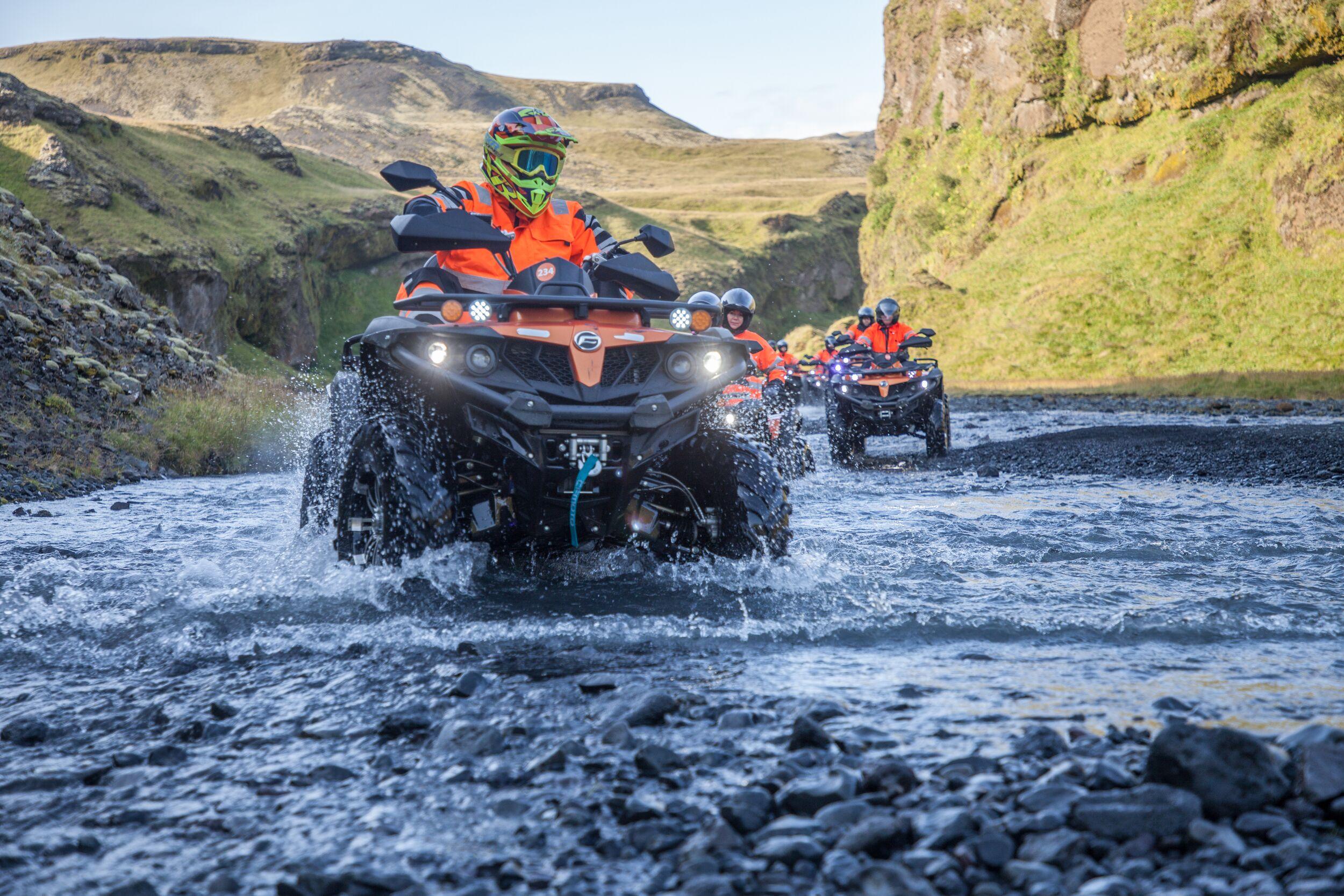
- Black Friday Sale

ATV Quad Express on Sólheimasandur
Welcome to an extraordinary ATV experience that transcends the ordinary – our Quad Bike Adventure awaits at the Mýrdalsjökull Base!

Plane Wreck Shuttle
Hop aboard the Plane Wreck shuttle for the 4 km (2.5 mi) to the DC-3 aeroplane wreckage on the hauntingly beautiful black sand beach of Sólheimasandur. The shuttle is available seven days a week between 10:00 and 17:00 and takes just 10-15 minutes to get to the plane!
Recommended tours
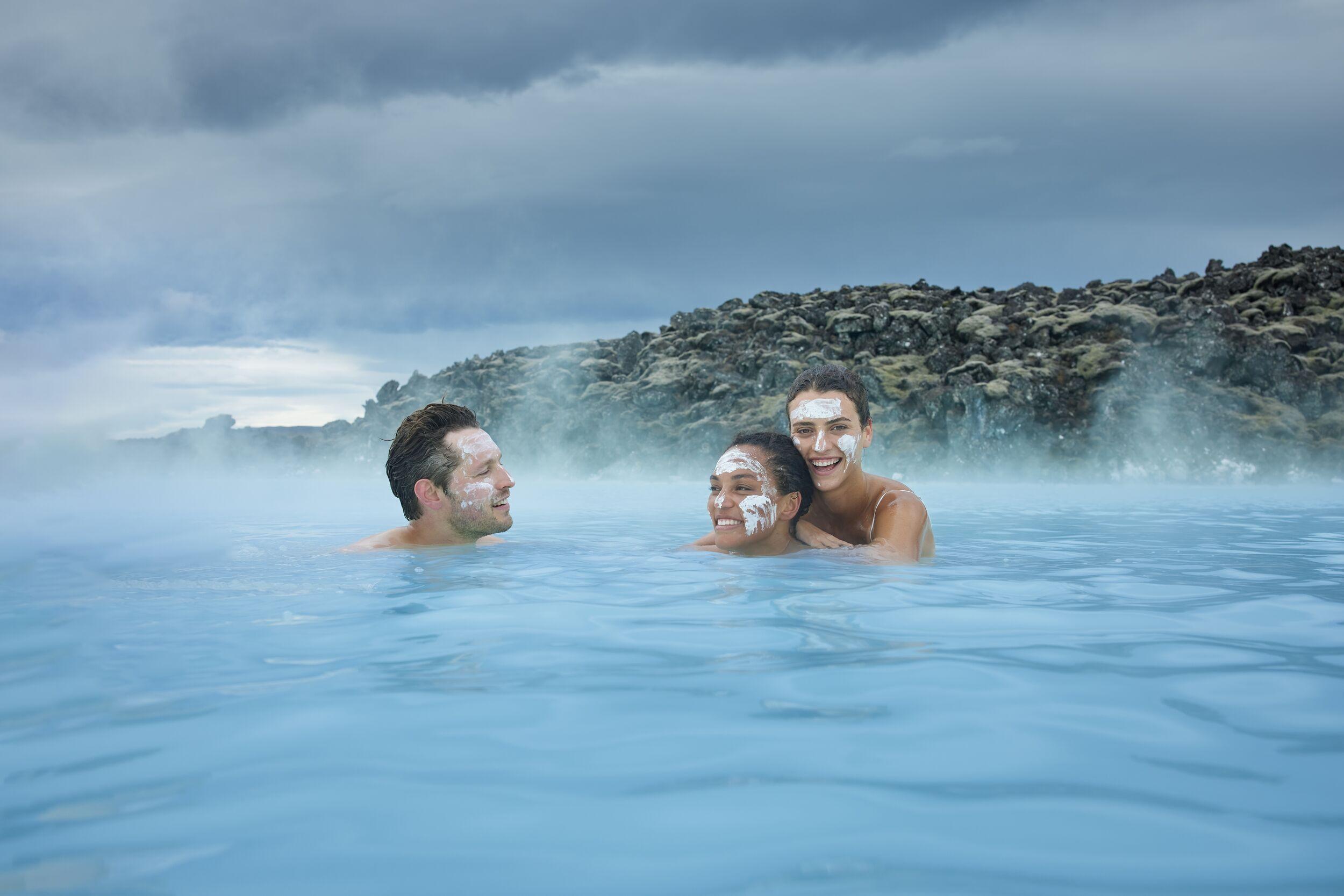
Icelandic Wellness Package - 6-Day
Golden Circle, Blue Lagoon, Reykjavík Food Walk, Snæfellsnes. Relax, recharge, and explore Iceland’s most stunning natural wonders with this 6-day (5-night) Icelandic Wellness package. This tour blends ultimate relaxation with breathtaking landscapes, Icelandic flavors and seamless travel with carbon-neutral transportation and expert local guides.
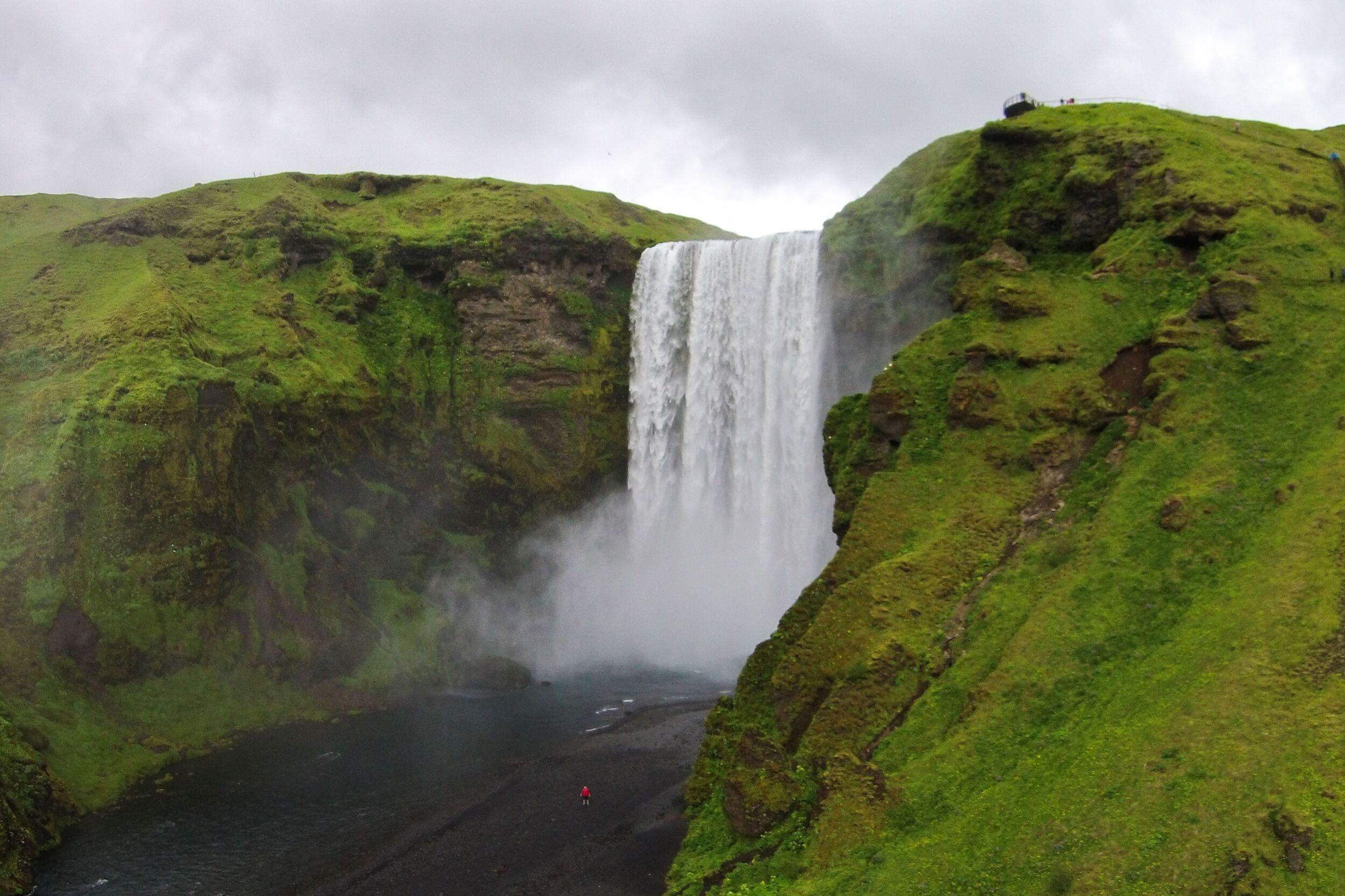
Highland Bus - Reykjavík to Skógar
In the summer, Skógar comes alive, turning into a lush green wonderland under the towering Eyjafjöll mountains. The area is home to one of Iceland’s most famous waterfalls, Skógafoss, a pearl of the south coast. The drive to Skógar is a scenic ride through the picturesque south of Iceland, passing by small farms and charming villages with astounding views of the surrounding mountains and volcanoes on clear days. Whether you are planning a day trip to the region or a multi-day hike, leave the driving to us!
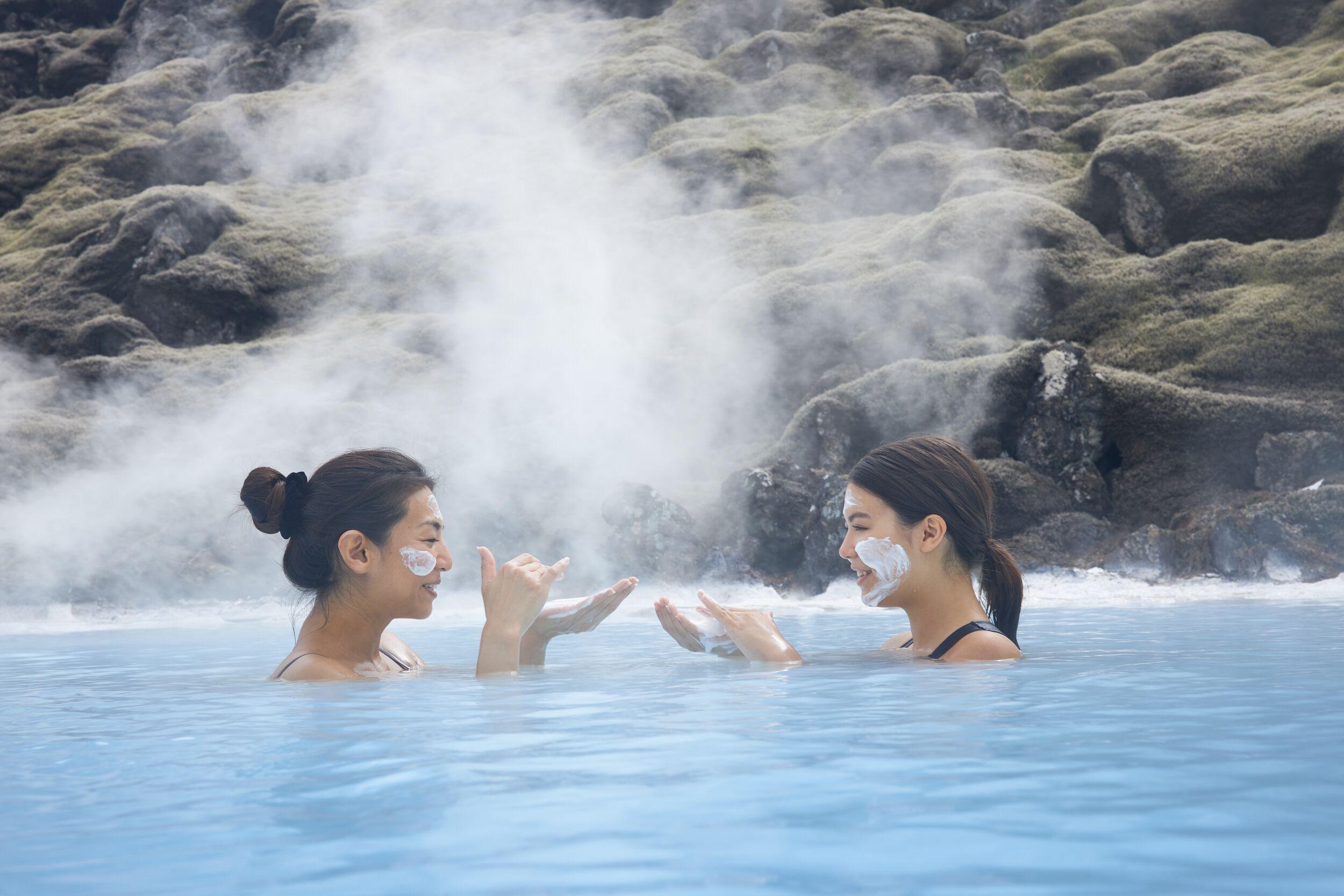
Reykjavík - Blue Lagoon round-trip transfer
Are you planning to visit the Blue Lagoon but aren’t booking a rental car? Enjoy your experience of the dreamlike Blue Lagoon to the fullest and book your comfortable return coach transfer with Reykjavik Excursions. Relax and enjoy free Wi-Fi to and from the Blue Lagoon.
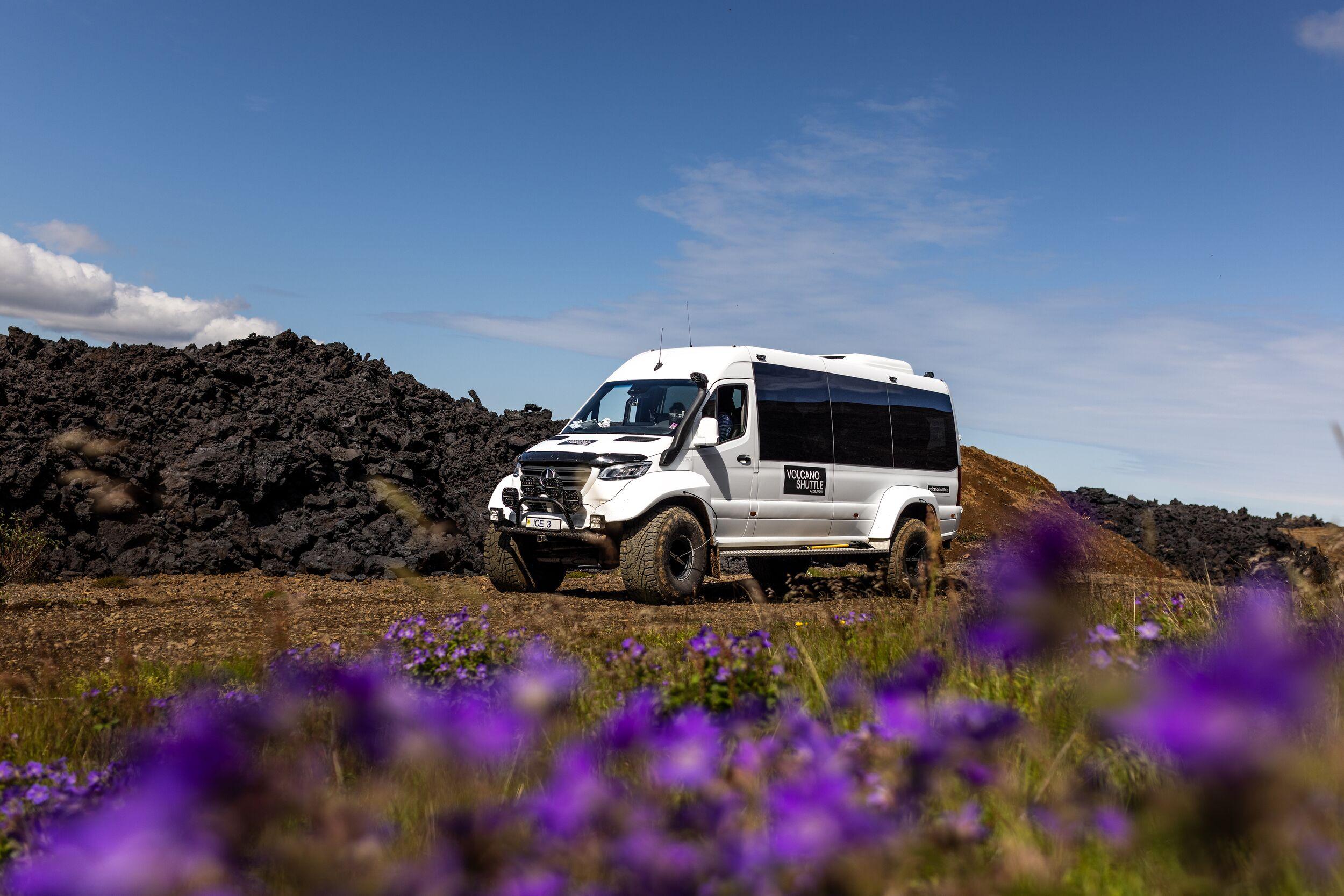
- Limited availability!
Volcano Shuttle
Buckle up for an unforgettable journey through Iceland’s youngest volcanic landscapes! The Volcano Shuttle is a thrilling Super Jeep off-road experience that brings you up close to the raw beauty and power of recent eruptions on the Reykjanes Peninsula — without the need for long hikes.
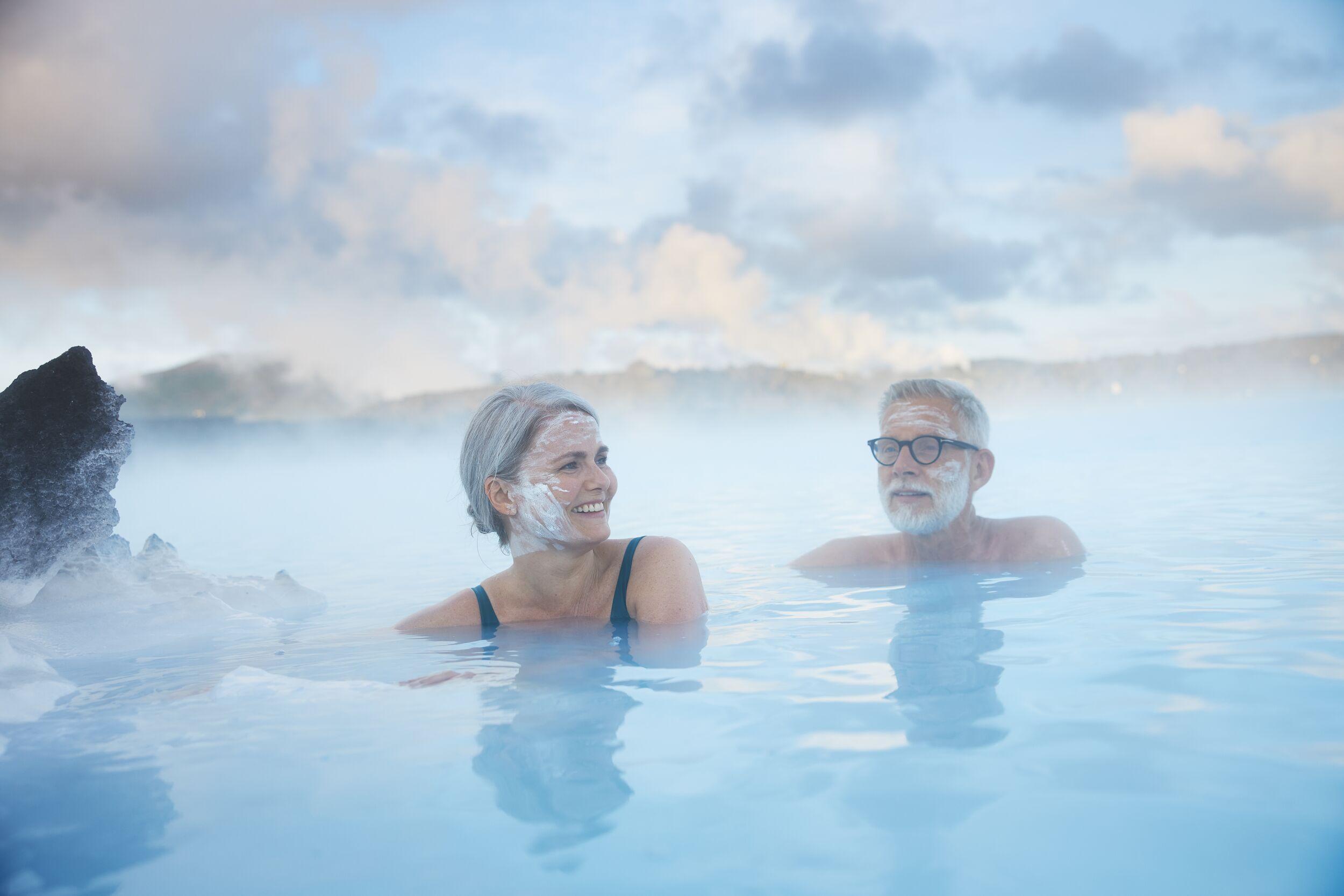
- Multiday Tour
Icelandic Wellness Package - 5-Day
Golden Circle, Fontana Spa, Blue Lagoon & Reykjavík Food Walk. A perfect blend of relaxation, natural beauty, and Icelandic culture, this 5-day (4 nights) Icelandic Wellness package invites you to unwind in Iceland’s famous wellness retreats and indulge in Reykjavík’s unique Nordic atmosphere.
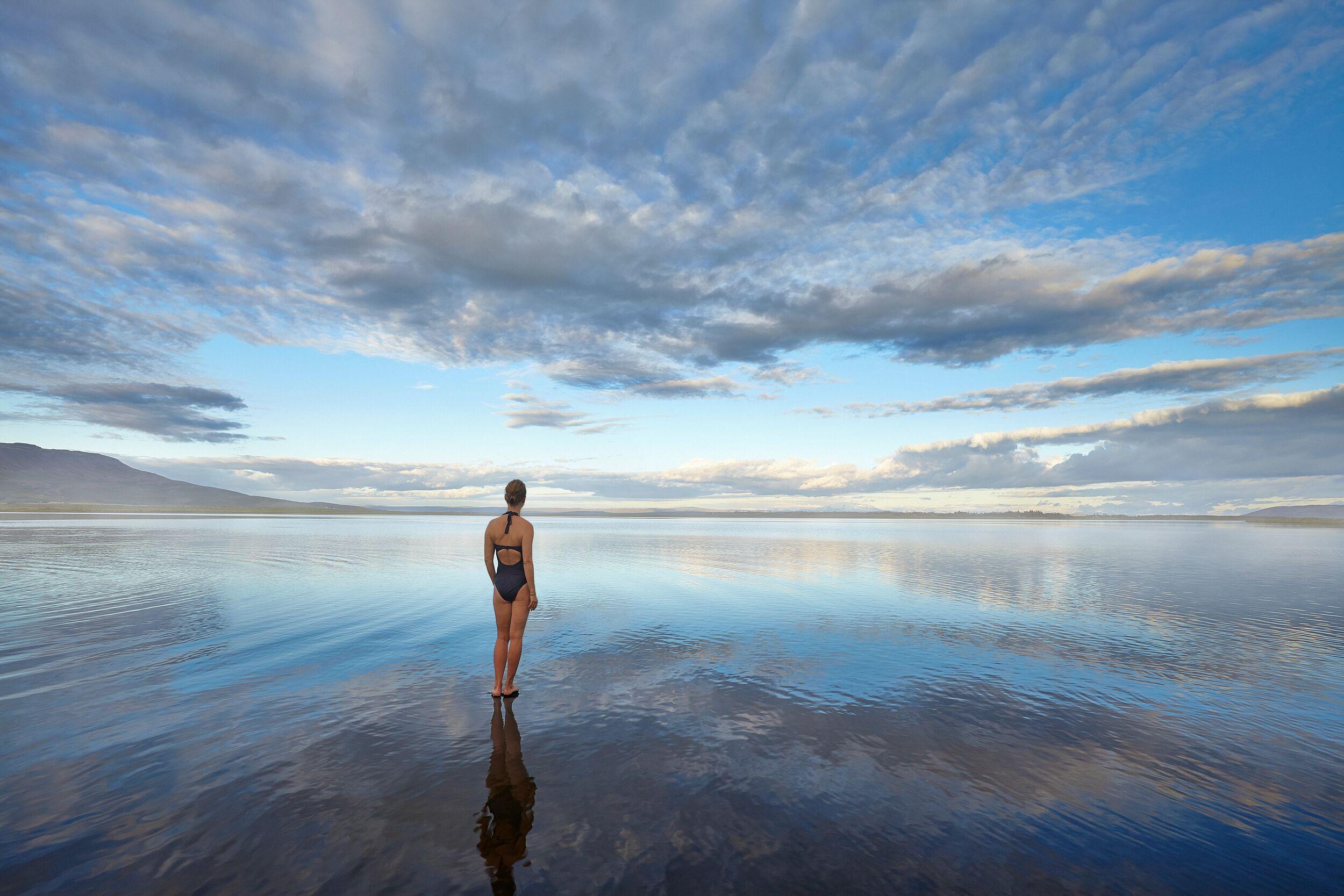
- Multiday Tour
Icelandic Wellness Package - 4-Day
Golden Circle, Laugarás Lagoon & Blue Lagoon. Immerse yourself in the perfect balance of adventure and relaxation with this 4-day Iceland itinerary, designed to refresh your body and mind. Explore Iceland’s stunning volcanic landscapes while indulging in its world-famous geothermal spas. This journey blends natural wonders with pure tranquility.


